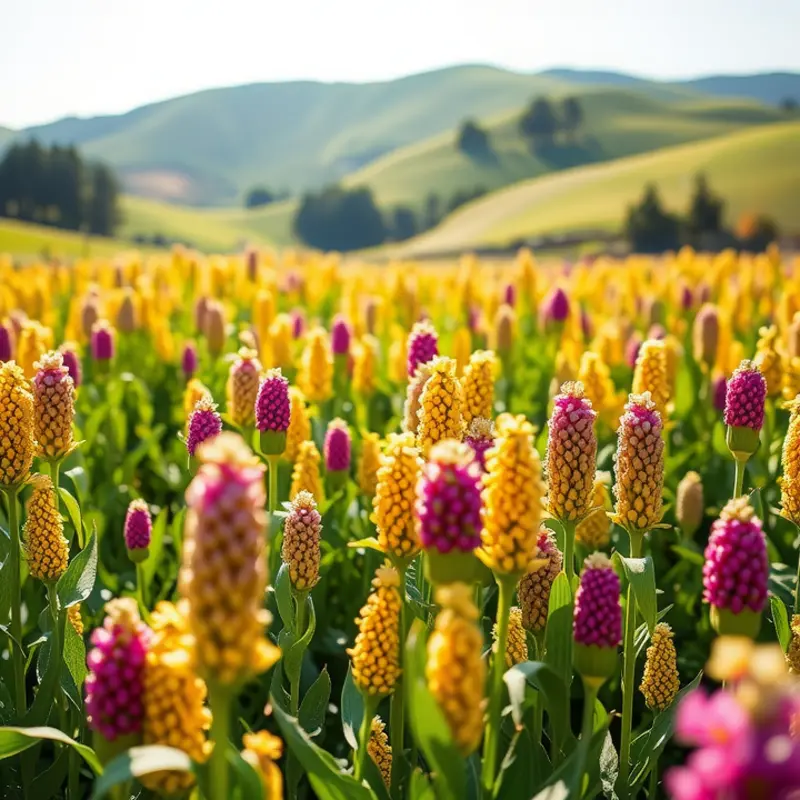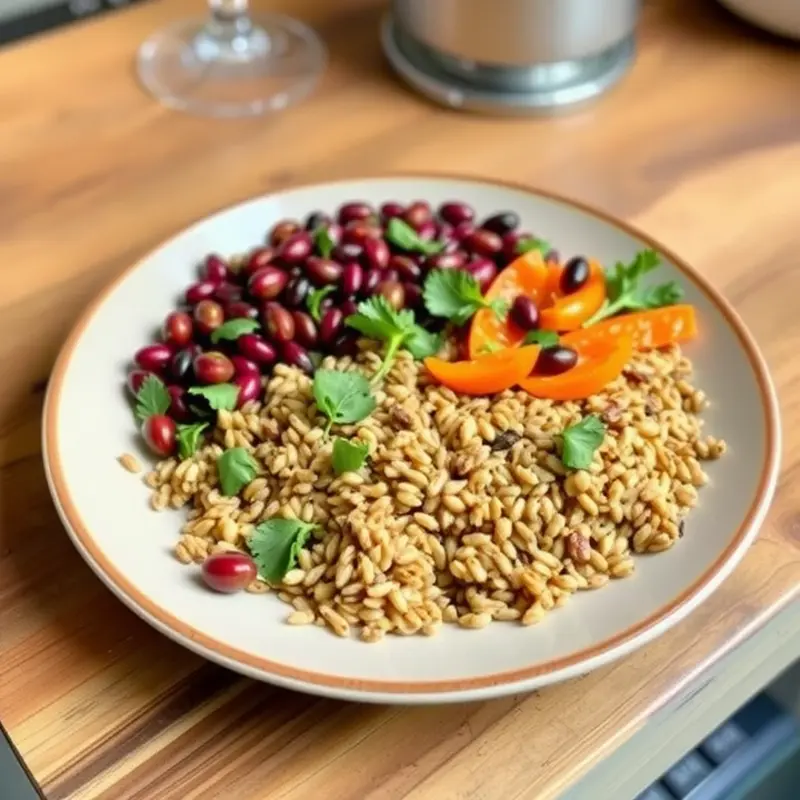Exploring the rich tapestry of global culinary traditions reveals a fascinating connection to ancient grains. These seeds, often overshadowed by modern staples, have been integral to various cultures, not just as sources of sustenance but as symbols of community and identity. This journey through time uncovers how these grains shaped diets and defined culinary landscapes across different civilizations, inviting food enthusiasts and culturally curious readers alike to appreciate their historical significance and unique flavors.
The Roots of Our Grains: Tracing Back to Ancient Cultures

Long before supermarkets, our ancestors practiced agriculture by cultivating unique grains. These ancient grains, embedded in cultural diets worldwide, were not just food; they were a significant part of social and spiritual life. Quinoa, for instance, has grown in the Andean region for over 5,000 years. Revered by the Incas as the ‘mother of all grains’, quinoa symbolizes life and warfare. Sown with sacred ceremonial rites, it knitted people with the land. Similarly, ancient cultivation methods involved rotating crop fields, ensuring sustainable use of resources.
Amaranth, another ancient treasure, flourished among Aztec subjects in Mesoamerica. Its cultivation required minimal land and water, showcasing its resilience. Amaranth’s tiny seeds are packed with nutrients, offering protein comparable to milk. The Aztecs believed amaranth had supernatural powers and used it in rituals honoring their deities, demonstrating its socio-religious significance.
Millet, with evidence tracing back at least 10,000 years, was a staple in African and Asian diets. Known for thriving in poor soils, millet played a crucial role in sustaining communities during climate fluctuations. It was interspersed with social festivals, often being a central element in celebrations of harvest and life, illustrating a robust system of seasonal planting and crop rotation. Such ancient practices inherently promoted biodiversity and ecosystem stability.
These grains show how agriculture was not merely about food production. It was a means of promoting social cohesion and ecological mindfulness. As communities planned and harvested these grains, they engaged in trade, spreading culinary techniques and cultures. Explore more about how such ancient trade influenced global culinary traditions here.
Grown sustainably, these grains not only maintained the health of the soil but also ensured food security to ancient societies. Modern agricultural systems can learn from this deep-rooted wisdom. Each grain bore more than nutritional value; it fostered community wellbeing, ecological balance, and cultural identity. As we rediscover the power of these grains, their enduring legacy reminds us of humanity’s long-standing relationship with the earth.
Culinary Heritage and Modern Revival: Native Grains on the Table

Ancient grains are increasingly being celebrated for their nutritional benefits and culinary versatility. Quinoa, amaranth, farro, and teff, to name a few, are finding their way back to tables worldwide, enriching diets with flavors and nutrients once forgotten.
From the rich valleys of Ethiopia, teff is a tiny grain known for its nutty flavor and nutritional profile. Teff is gluten-free and packed with protein, iron, and calcium, making it a fantastic ingredient for those seeking diverse dietary options. One popular way to incorporate teff is in the form of injera, a traditional Ethiopian flatbread. This spongy bread is a perfect accompaniment for stews and can also serve as a base for wraps.
Amaranth, revered by the Aztecs, is making a comeback in modern kitchens. This small but mighty seed is rich in lysine, an essential amino acid absent in many other grains. Amaranth can be popped like popcorn for a crunchy snack or boiled into a porridge. Consider adding shredded coconut and honey for a breakfast bowl that highlights its sweetness.
Farro, with its chewy texture and nutty flavor, is an ancient wheat grain that pairs well with hearty vegetables and proteins. Italians have used farro for millennia, especially in soups and salads. A refreshing salad with farro, cherry tomatoes, cucumber, feta, and a drizzle of olive oil offers a nutritious, satisfying meal.
Quinoa holds an honored place among these ancient grains. Celebrated by the Incas as ‘the mother of all grains,’ quinoa is a complete protein source, containing all nine essential amino acids. It cooks quickly and can be used in salads, as a substitute for rice, or even in desserts. Try making a quinoa salad with black beans, corn, and avocado, seasoned with lime and cilantro for a vibrant, nutrient-packed dish.
These grains not only enrich our culinary options but also link us to the cultural heritage of diverse regions around the globe. Many chefs and home cooks are rediscovering these ancient staples, weaving them into modern diets while preserving traditional recipes. Some restaurants have started featuring grains like millet and sorghum on their menus, pairing them with seasonal ingredients for a unique culinary experience.
The revival of ancient grains aligns well with trends in plant-based eating, promoting sustainable and eco-friendly options. Their resurgence supports not only healthier eating habits but also a deeper appreciation for global cuisines. For those interested in exploring more sustainable kitchen practices, consider reading about eco-smart kitchen storage to complement your ancient grain journey.
As we continue to integrate these grains into everyday cooking, we honor the rich tapestries of culture and tradition they represent, marrying heritage with healthful modern living.
Final words
The journey through ancient grains not only enriches our understanding of culinary history but also opens doors to healthier, more sustainable eating practices. By integrating these native grains into modern diets, we not only celebrate diverse cultural heritages but also foster a deeper connection to our food. As we revive these grains in our kitchens, we embrace the legacy of countless generations who cultivated and cherished them. The global table, adorned with amaranth, quinoa, and millet, invites all food enthusiasts to explore and appreciate these remarkable seeds rich with tradition and flavor.








